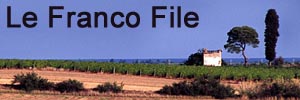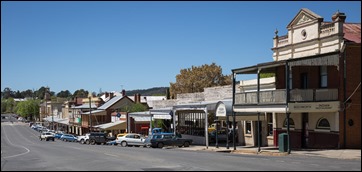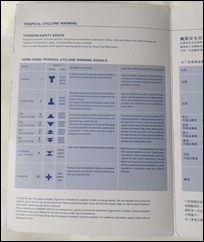Arriving yesterday [Friday] afternoon and leaving tomorrow [Sunday] evening, today was to be our one full day in Hong Kong and we were keen to make the most of it playing tourist. Rather than waste time searching for breakfast on the streets, we opted for the HK$136 buffet breakfast in the hotel. This was an expansive spread with a bit of everything: omelettes could be ordered from the breakfast chef; there were western options including sausages, beans and less usual chicken nuggets and mozzarella sticks; even more unusual for us was the oriental section including a modest dim sum selection, noodles with veggies, Thai fish cakes and, most intriguingly, “Pork Cartilage”. Hmm, I think I’ll pass on that. The melon and yogurt looked safer, though.
Overnight we’d lost much of the sun and a dull overcast was prevalent. The morning was warm and humid, though, and occasional breaks in the cloud began forming. There’s a couple of touristy things that might be considered as essential. One of these is to ascend Victoria’s Peak which “reaches an altitude of 552m and is one of the most visited tourist attractions in Hong Kong”, preferably via the funicular Peak Tram. Francine fancied that. She also fancied the other main “must do” which is a trip on the Star Ferry across to Kowloon on the mainland.
The Peak Tram departs from Hong Kong Park. I was keen to snag the dragonflies in the park again, this time with my proper wildlife lens. So, plan A was to take Shanks’s Pony back to HK Park for our morning diversion.
Walk around Hong Kong for very long and one particular sound becomes evocative. At each traffic light controlled pedestrian crossing, and there are many, a mechanical sound is heard. When traffic has the priority, the sound is a continuous rhythmic, slow, “clack, clack, clack”. Once the traffic’s light turns red and pedestrians have the right of way, the slow clack clack turns into a rapid clatter. It’s great and will become one of my overriding signature memories of HK. After 30 minutes of progress listening to clack, clack, clatter, clatter, clatter, clack, clack, clack, we arrived back at Hong Kong Park.
After an hour or so playing with the dragonflies at the ornamental lake, a few of which were additional to our first visit, it was 11:00 and we made our way to the Peak Tram station. So, it seemed, had half the population of Hong Kong; the queue looked interminable. It is “…one of the most visited tourist attractions in HK”. Yes, so we see. With an overcast sky threatening to make any scenic photography dull, leaving us simply to mutter “oo, ah” at the view that could be seen, and with the prospect of a subsequent interminable queue just to get back down again, we swiftly resorted to plan B, which Francine developed on the fly.
 Plan B was to continue our walking tour of Hong Kong making for Pier 7 and the Star Ferry where we could head for Kowloon on the mainland, intending to look back at the skyline of Hong Kong Island and go “oo, ah” there, instead, complete with Francine’s camera. Our route took us past St. John’s Cathedral where it looked as if some sort of ceremony was about to kick off, so we couldn’t go inside. We continued to Pier 7 where we swiftly flashed our Octopus cards at the automated entry barrier for the ferry. Octopus magic happened and we were soon boarding one of the ferries, which appeared to depart every 10 minutes or so and were capacious, so, wonder of wonders, there was no queue. We were soon on our way over to Kowloon.
Plan B was to continue our walking tour of Hong Kong making for Pier 7 and the Star Ferry where we could head for Kowloon on the mainland, intending to look back at the skyline of Hong Kong Island and go “oo, ah” there, instead, complete with Francine’s camera. Our route took us past St. John’s Cathedral where it looked as if some sort of ceremony was about to kick off, so we couldn’t go inside. We continued to Pier 7 where we swiftly flashed our Octopus cards at the automated entry barrier for the ferry. Octopus magic happened and we were soon boarding one of the ferries, which appeared to depart every 10 minutes or so and were capacious, so, wonder of wonders, there was no queue. We were soon on our way over to Kowloon.
On our ferry ride, the view across Victoria Harbour had been decidedly hazy with a pants grey sky. The original concept of looking back at Hong Kong Island’s skyline and muttering appreciative “oo, ah” noises felt less than appropriate. When we disembarked, the water front of Kowloon and the main shopping streets were heaving so we tried Kowloon Park and its water features as an escape. After Hong Kong Park on the other side, Kowloon Park felt rather run down and very slightly seedy. It was certainly quieter than the surrounding streets, though, so it achieved that objective. Clearly the dragonflies were less impressed with it, too; we found just three species and one of those was being lunch for something else. Mind you, most of the handful of water bodies looked pretty sterile and more ornamental.
In the HK parks we’d been seeing frequently displayed signs of which I heartily approved. One sign banned smoking with a maximum fine of HK$5000 [~ £500]. Another sign banned dogs. Wonderful stuff! I wonder if they knew I was coming?
We’d tried a bus and a ferry, now it was time to head back to the relatively more civilized Hong Kong Island, a journey for which we elected to take the train that runs beneath Victoria Harbour. We flexed our Octopus cards again and were soon back at Admiralty station courtesy of the wonderfully efficient underground rail system.
 We had one more form of Hong Kong public transport to experience, a “Ding Ding”. Ding Dings are vintage trams that come in a dazzling variety of colours. They’ve been running in Hong Kong since 1904 and looked like a charming way to travel, though there is a very limited choice of routes. Fortunately, the main route took us back towards our hotel. Having embarked at the rear of the tram, one has to alight from the front door – it’s a sort of one-way system – and forcing ones way forwards through the narrow lower deck can best be described as interesting. Chatting with a helpful young man back from university in England, after a few stops we spotted our opportunity, flashed our Octopus flexible friends again and alighted. Escaped!
We had one more form of Hong Kong public transport to experience, a “Ding Ding”. Ding Dings are vintage trams that come in a dazzling variety of colours. They’ve been running in Hong Kong since 1904 and looked like a charming way to travel, though there is a very limited choice of routes. Fortunately, the main route took us back towards our hotel. Having embarked at the rear of the tram, one has to alight from the front door – it’s a sort of one-way system – and forcing ones way forwards through the narrow lower deck can best be described as interesting. Chatting with a helpful young man back from university in England, after a few stops we spotted our opportunity, flashed our Octopus flexible friends again and alighted. Escaped!
We were now within striding distance of our hotel and began wending our way through Wan Chai’s market streets. These were much as we expected a Chinese market might be with a dazzling array of vegetable stalls, meat stalls and fish stalls. Most of the fruit and vegetables have become quite familiar to us in UK supermarkets in more recent years. Some items suspended in the butchers’ stalls defied recognition, though – I was particularly intrigued by a suspended long, brown, hairy tail. The fish stalls were a mix of eye-popping and distressing. Firstly, there wasn’t so much ice in evidence as water – many fish are sold alive, just, in too little water for comfort but alive nonetheless. I presume this is to keep them as fresh as possible in the prevailing heat and humidity. Particularly distressing was watching a live eel squirming around – alive but all but cut in half through the spine such that it could move its front half but only drag the still-attached rear half. I suspect that it could have escaped if left “intact”. No sense of feelings for animals that are a commodity, then. Quelle surprise!






 As predicted, for dinner we thought for only a millisecond before returning to the delightful Derby Bar. We walked in and were instantly greeted like old friends by the barman, who ushered us back to our stools at the bar. Maybe he also enjoyed our interaction. Almost immediately, having remembered our drinks choices, he glanced for confirmation before pouring them and handing us a menu. Tonight we side-stepped the Fish and Chips. We thought we’d avoid the Deep Fried Chicken Cartilage [HK$68] and Fish Entrails with Cheese [HK$68], too. So, we asked the barman for his help with recommendations, which were a plate of Spicy Cuttlefish [HK$78], lightly battered with a chilli dipping sauce (salty, not sweet), together with a plate of Fried Mix Mushrooms with Garlic [HK$78], which unexpectedly came served on a bed of cabbage. Real vegetables, no less! OK, we’d better have some chips, too. We could have rounded off our feast with a Quick Fuck [HK$68] or two, or maybe some Sexual Chocolate [HK$68] but, no, we stuck with our trusty Chardonnay.
As predicted, for dinner we thought for only a millisecond before returning to the delightful Derby Bar. We walked in and were instantly greeted like old friends by the barman, who ushered us back to our stools at the bar. Maybe he also enjoyed our interaction. Almost immediately, having remembered our drinks choices, he glanced for confirmation before pouring them and handing us a menu. Tonight we side-stepped the Fish and Chips. We thought we’d avoid the Deep Fried Chicken Cartilage [HK$68] and Fish Entrails with Cheese [HK$68], too. So, we asked the barman for his help with recommendations, which were a plate of Spicy Cuttlefish [HK$78], lightly battered with a chilli dipping sauce (salty, not sweet), together with a plate of Fried Mix Mushrooms with Garlic [HK$78], which unexpectedly came served on a bed of cabbage. Real vegetables, no less! OK, we’d better have some chips, too. We could have rounded off our feast with a Quick Fuck [HK$68] or two, or maybe some Sexual Chocolate [HK$68] but, no, we stuck with our trusty Chardonnay.
We’d timed our arrival to perfection as the small establishment began filling with folks intent on watching a football match between Manchester United and Liverpool. Happily, the screen was out of our eye line and we could continue our conversation with the jovial barman. He supports Man U, by the way.
I can’t recommend The Derby Bar highly enough; I’d be reticent to eat anywhere else in HK, now. 😀
 Simple to assimilate information was scarcer than we’d have liked. For example, we saw a finger sign pointing to “woodland walk”. What there wasn’t was a distance quoted. Neither could we see details of how long the walk might have been once we arrived, assuming we did. We didn’t. We did head off in the direction indicated. though, but progress was admittedly very slow because I was being distracted by odonata, most of which were hunkering down low in the vegetation against the wind. One of them was a gaudy male Aurora Bluetail (Ischnura aurora) which I had been hoping to see.
Simple to assimilate information was scarcer than we’d have liked. For example, we saw a finger sign pointing to “woodland walk”. What there wasn’t was a distance quoted. Neither could we see details of how long the walk might have been once we arrived, assuming we did. We didn’t. We did head off in the direction indicated. though, but progress was admittedly very slow because I was being distracted by odonata, most of which were hunkering down low in the vegetation against the wind. One of them was a gaudy male Aurora Bluetail (Ischnura aurora) which I had been hoping to see. We eventually covered about a mile where Francine ended up playing with some trees with wet feet, too. Still seeing nothing that looked as though it might be the woodland walk, we decided to head back to the meagre information centre/cafe for coffee and a chat. I finally found a map and mentioned dragonflies which, as so often, caused raised eyebrows. [The subtext is usually, “what, not birds?”] I explained the wind that could’ve blown any interesting specimens into the northern hemisphere and asked if the man knew of any more sheltered locations. “Not really”, he replied, “I’ve never known it this windy”. We headed for the worryingly named Boggy Bridge Road.
We eventually covered about a mile where Francine ended up playing with some trees with wet feet, too. Still seeing nothing that looked as though it might be the woodland walk, we decided to head back to the meagre information centre/cafe for coffee and a chat. I finally found a map and mentioned dragonflies which, as so often, caused raised eyebrows. [The subtext is usually, “what, not birds?”] I explained the wind that could’ve blown any interesting specimens into the northern hemisphere and asked if the man knew of any more sheltered locations. “Not really”, he replied, “I’ve never known it this windy”. We headed for the worryingly named Boggy Bridge Road. In between a couple of these works of art, we found another of nature’s works of art: a dragonfly that looked new to me was zooming about energetically over a small pond. I stalked it for some time, managing a handful of in-flight shots – it showed no signs of pausing. It showed no signs of pausing, that is, until it found a female and mated. The tandem pair began ovipositing just a short distance from me. A static shot at last.
In between a couple of these works of art, we found another of nature’s works of art: a dragonfly that looked new to me was zooming about energetically over a small pond. I stalked it for some time, managing a handful of in-flight shots – it showed no signs of pausing. It showed no signs of pausing, that is, until it found a female and mated. The tandem pair began ovipositing just a short distance from me. A static shot at last.











































Recent Comments